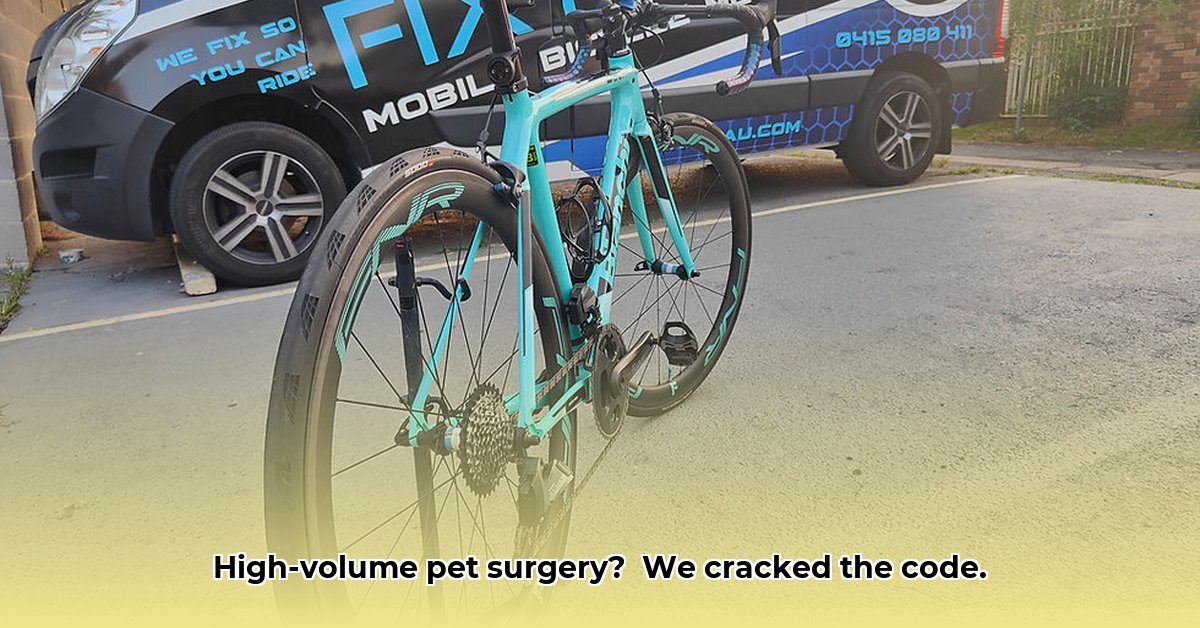
Fix'n Wag'n's Operational Model: A Deep Dive
Fix'n Wag'n has carved a unique niche in veterinary medicine with its high-volume approach to feline surgeries. Performing an impressive 25 to 40 feline surgeries daily, they've demonstrated the potential for efficient, high-throughput veterinary care. This model, however, presents both significant strengths and areas that require attention. How sustainable is this volume-focused model? Can this approach be replicated elsewhere?
This case study will analyze Fix'n Wag'n's operational model, identifying its strengths and weaknesses, assessing the impact on various stakeholders, and offering recommendations for improved efficiency and long-term sustainability. The clinic's success hinges on a well-oiled machine, but even the most efficient systems benefit from continuous improvement.
Fix'n Wag'n's daily surgical volume is a testament to their efficient processes and the considerable demand for affordable spay and neuter services in their area. This high volume isn't their only asset; they also offer a comprehensive range of preventative care, positioning themselves as a one-stop shop for many pet owners' needs. Their community engagement, particularly their participation in the Butler County SEA program, further enhances their impact. But what are the trade-offs of such a model? Do the benefits outweigh potential risks?
Strengths and Weaknesses of the Fix'n Wag'n Model
Fix'n Wag'n’s high-volume model offers significant advantages, primarily in terms of cost savings and increased access to affordable care. This affordability significantly benefits the community, making veterinary care available to a broader spectrum of pet owners. Their community engagement further solidifies their position as a valuable asset.
However, limitations exist. Currently, their diagnostic capabilities are limited. Complex cases often require referral to specialized facilities, potentially increasing costs and inconvenience for pet owners. Moreover, the lack of detailed data collection, beyond simple surgical counts, hinders a comprehensive understanding of their overall effectiveness and client satisfaction. Such data is vital for continuous improvement and measuring the true impact of their services. Is this high volume truly sustainable and scalable without addressing these limitations?
Stakeholder Analysis and Recommendations
Fix'n Wag'n's model touches upon several key stakeholder groups, each with its unique interests and concerns. Understanding these perspectives is crucial for optimizing the clinic's strategy and ensuring long-term success.
| Stakeholder | Short-Term Goals | Long-Term Goals | Recommendations |
|---|---|---|---|
| Fix'n Wag'n | Improve data tracking; upgrade scheduling software; staff training. | Expand services (advanced diagnostics, dental); develop strategic partnerships; explore new funding streams. | Invest in advanced diagnostics; implement robust data analytics; explore partnerships for specialized services; diversify funding sources. |
| Veterinarians | Refining surgical techniques; continuing education. | Potential specialization in feline surgery or exploring other veterinary niches. | Focus on advanced surgical techniques and mentorship; seek opportunities for continuing education and specialized training. |
| Residents | Affordable spay/neuter services; increased pet well-being. | Access to more comprehensive and affordable pet care. | Advocate for ongoing support of the SEA program and similar initiatives; promote engagement with local animal welfare organizations. |
| Potential Clients | Convenient and reasonably priced pet care services. | Transparent communication about all services, including limitations and referral processes; increased trust and confidence. | Develop clear communication strategies; implement robust client feedback mechanisms; offer flexible payment options. |
Risk Assessment and Mitigation Strategies
The clinic's high-volume model is not without inherent risks. Potential issues include staffing shortages, veterinarian burnout, and the limitations of their current diagnostic capabilities.
- Staffing Shortages/Burnout: Implementing improved scheduling and utilizing support staff effectively can mitigate burnout, alongside competitive compensation and benefits packages.
- Limited Diagnostic Capabilities: Expanding diagnostic capabilities through investment in new equipment or strategic partnerships with specialized veterinary clinics is crucial.
- Financial Instability: Diversifying funding sources beyond reliance on a single program like the Butler County SEA program is highly recommended. This could involve exploring grant opportunities, charitable contributions, and community fundraising.
Regulatory Compliance: Maintaining Ethical Standards
Strict adherence to all relevant regulations is non-negotiable for Fix'n Wag'n’s continued operation. This includes animal welfare standards, waste disposal procedures, licensing requirements, and thorough medical record keeping. Regular compliance reviews are essential to ensure consistent adherence to standards.
Conclusion: Scalability and Long-Term Sustainability
Fix'n Wag'n's high-volume model for feline surgeries demonstrates significant potential for providing accessible and affordable veterinary care. However, their long-term success depends on proactive management of existing limitations, particularly expanding diagnostic capabilities, implementing robust data collection, and diversifying revenue streams. By addressing these areas, Fix'n Wag'n can build on its existing success and establish a sustainable, scalable model that serves as a benchmark for efficient high-volume veterinary practices. The model's viability hinges on balancing high-volume efficiency with a commitment to quality care and comprehensive service delivery.